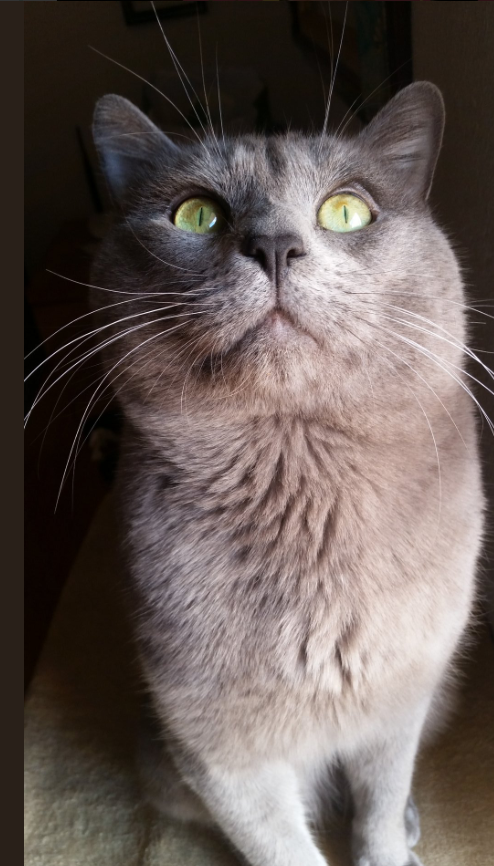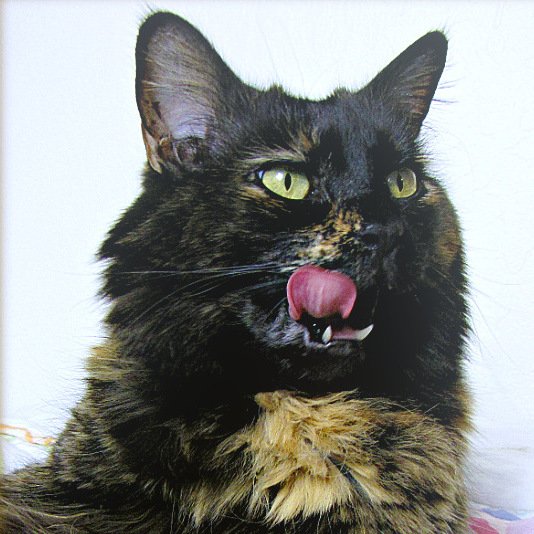Have you ever caught your cat gazing up at you with those curious, unblinking eyes and wondered, “Does she really get what I’m saying—or even how I’m saying it?” The mystery of feline communication is both enchanting and puzzling. Cat owners everywhere have felt that magical connection, sensing their cat responds not only to their words but to the very mood in their voice. But what happens when your tone is calm and steady? Can cats still pick up on your intentions and emotions? Let’s unravel the fascinating science and heartfelt anecdotes behind whether our calm tones speak louder to our cats than we think.
The Secret World of Cat Communication

Cats live in a universe where subtle gestures, soft sounds, and tiny twitches mean everything. Unlike dogs, who bark and whine openly, cats prefer whispers to shouts. They communicate with gentle meows, slow blinks, and the flick of a tail. This secretive style means they’re experts at picking up cues from their environment, including the people they live with. When you speak, your cat isn’t just hearing words. She’s tuning in to every nuance—volume, pitch, rhythm, and even silence. This makes them surprisingly skilled at reading between the lines, even when things seem calm and ordinary.
Why Tone Matters More Than Words
To a cat, human language sounds like an odd melody. While your pet might learn her name or understand a few words like “treat” or “no,” it’s the way you say them that really counts. A soothing, gentle voice can draw a cat closer, while a harsh or sharp tone—even without yelling—might send her scurrying away. This sensitivity to tone goes back to their wild ancestors, who relied on reading subtle signals to survive. So, even when you’re calm, your tone carries a message your cat is perfectly equipped to decode.
The Science of Feline Hearing
Did you know that cats can hear sounds at frequencies far beyond what humans can detect? Their ears are designed to catch the smallest rustle or squeak, making them excellent hunters—and excellent listeners. This superpower means that even the slightest change in your voice doesn’t go unnoticed. When you speak calmly, your cat can sense the tranquility or tension beneath the surface. Scientists believe this heightened hearing helps cats distinguish not just what you say, but how you say it, making your tone an essential part of how you communicate.
Calm Voices: Comfort or Confusion?

A calm voice can work wonders for soothing a nervous or anxious cat. Imagine coming home after a long day and finding your cat hiding under the bed. A few soft, steady words can coax her out, showing her that everything is safe. But sometimes, a calm tone might confuse a cat if your body language doesn’t match. If you’re upset but speaking softly, your cat might sense something’s off. Cats are masters at picking up mixed signals, so consistency between your tone and your actions can help them feel secure.
Feline Body Language and Vocal Cues
Cats watch us as closely as we watch them. They pay attention not just to our voices, but to our faces, hands, and movements. When you speak in a calm tone, your cat may pair those sounds with your relaxed posture or gentle gestures. This combination of cues helps her understand your mood and intentions. If your voice is calm but your movements are abrupt, your cat might become wary. Matching your tone with soothing actions can make your cat feel truly understood.
Emotional Resonance: Do Cats Feel What We Feel?
Many cat owners swear their pets know exactly when they’re happy, sad, or stressed. There’s growing evidence to suggest cats can “catch” our emotions through our tone of voice. When you speak softly and lovingly, your cat might respond by purring, nuzzling, or curling up beside you. This emotional resonance is a sign of the deep bond you share. Even when you’re calm, your cat can often sense the emotion behind your words, responding in ways that show empathy and understanding.
Studying Cat Responses to Calm Tones
Researchers have conducted experiments to observe how cats react to different vocal tones. In many studies, cats show a clear preference for calm, gentle voices, approaching their owners more readily and displaying affectionate behavior. When exposed to angry or loud tones—even if the words are neutral—cats often withdraw or become anxious. These findings suggest that cats are not only listening to what we say, but to how we say it, and that calm tones are particularly effective at building trust.
Training Your Cat With Your Voice
Believe it or not, your tone of voice can be a powerful training tool. Cats may not respond to commands like dogs do, but they can learn to associate certain tones with rewards or consequences. Using a calm, encouraging voice when offering treats or praise can reinforce positive behaviors. On the other hand, a firm but not angry tone can signal boundaries. Consistency in your vocal cues helps your cat understand what’s expected, making training less stressful for both of you.
Common Misconceptions About Cats and Voice
Some people think cats are aloof or indifferent to human voices, but that couldn’t be further from the truth. While cats may not rush to greet you at the door like a dog, they are quietly attuned to your every word and inflection. The myth that cats only respond to food or ignore their humans overlooks their subtle intelligence. In reality, cats often react to the emotional undercurrents in your calm voice, even if their response is subtle or delayed.
Real-Life Stories of Tone and Trust

Cat owners around the world share heartwarming stories of their pets responding to a gentle word or a soothing tone in moments of fear or pain. For example, a cat terrified by a thunderstorm may relax when her owner speaks calmly, her body language softening as she listens. These stories highlight the deep trust that can form through consistent, gentle communication. They remind us that the bond between humans and cats is built not just on actions, but on the reassuring power of our voices.
The Role of Name Recognition
Many cats learn to recognize their names, but it’s often the tone that gets their attention. Call your cat’s name in a soft, loving voice, and she’s more likely to come running—or at least glance your way. If you use her name in a stern or annoyed tone, she might hide or ignore you. This shows that cats associate the emotional context of your voice with their names, making tone as important as the words themselves.
How Stress Affects Your Tone (And Your Cat)

Life is full of stressful moments, and sometimes we can’t hide our anxiety, even when we try to stay calm. Cats are incredibly sensitive to these changes, often picking up on the tiniest quiver in your voice. If you’re tense, your cat might become nervous, too, even if you’re speaking softly. Being mindful of your tone during stressful times can help your cat feel more secure and less likely to act out or withdraw.
Children, Calm Voices, and Cats

Children often have trouble modulating their voices, but teaching them to use a calm, gentle tone can make a big difference in how a cat responds. Cats may be startled by loud or shrill sounds, but when kids speak softly, the cat is more likely to approach and bond with them. This can help foster a gentle, respectful relationship between child and cat, teaching empathy and patience on both sides.
Multiple Cats and Vocal Cues

In a home with more than one cat, vocal tone becomes even more important. Each cat may respond differently to your calm voice, with some seeking attention while others remain cautious. Observing how each cat reacts can help you tailor your communication style, using calm tones to reassure shy cats and encourage social ones. This personalized approach helps create harmony in a multi-cat household.
The Power of Routine and Familiar Tones
Cats thrive on routine, and your calm, familiar voice is a big part of their daily comfort. Whether it’s the sound of your morning greeting or the way you call them for dinner, these rituals build trust and security. A calm tone reassures your cat that everything is as it should be. Over time, these gentle vocal habits become a source of stability, helping your cat feel at home.
When Calm Isn’t Enough: Reading Between the Lines

Sometimes, a calm voice isn’t enough to soothe a distressed or frightened cat. In these moments, your cat may need more than just words—she may need silence, gentle touch, or simply your presence. Learning to combine a calm tone with other comforting behaviors can help your cat feel safe, even when words fail. Remember, communication with cats is a holistic experience, with tone just one piece of the puzzle.
Voice Recognition: Can Cats Tell People Apart?

Cats can often distinguish between the voices of different people in the household. Even in a calm tone, your cat may react differently to your partner, child, or guest. This ability to recognize individual voices helps cats form unique relationships with each person. When everyone in the home uses a calm, gentle tone, it creates a shared language of trust that benefits both cats and humans.
What About Cats and Strangers?
When a stranger enters your home, a calm voice can help put your cat at ease. Cats are naturally cautious around unfamiliar people, but a gentle tone can signal that the newcomer is friendly. Encouraging visitors to speak softly and move slowly can help your cat feel less threatened, easing introductions and reducing stress for everyone.
Age and Sensitivity to Tone
Kittens are especially responsive to tone, learning from their mothers and from humans how to interpret different sounds. Older cats may become more set in their ways, but they still respond to calm, affectionate voices. In fact, as cats age and their senses change, a familiar, soothing tone can provide comfort and continuity, helping them navigate new experiences or health challenges.
Building a Lasting Bond Through Voice
Using a calm, loving tone consistently is one of the simplest yet most powerful ways to deepen your bond with your cat. Over time, your cat will associate your gentle voice with safety, affection, and home. This trust forms the foundation of a relationship built on mutual understanding, making every shared moment richer and more rewarding.
Final Thoughts on Calm Tones and Cat Understanding

The next time you talk to your cat—even if you’re perfectly calm—remember that she’s listening to more than just your words. Every note, pause, and inflection carries meaning in her world. With patience, empathy, and a gentle tone, you can communicate with your cat in ways that go far beyond language, building a connection that’s truly special.
Hi, I’m Bola, a passionate writer and creative strategist with a knack for crafting compelling content that educates, inspires, and connects. Over the years, I’ve honed my skills across various writing fields, including content creation, copywriting, online course development, and video scriptwriting.
When I’m not at my desk, you’ll find me exploring new ideas, reading books, or brainstorming creative ways to solve challenges. I believe that words have the power to transform, and I’m here to help you leverage that power for success.
Thanks for stopping by, Keep coming to this website to checkout new articles form me. You’d always love it!





